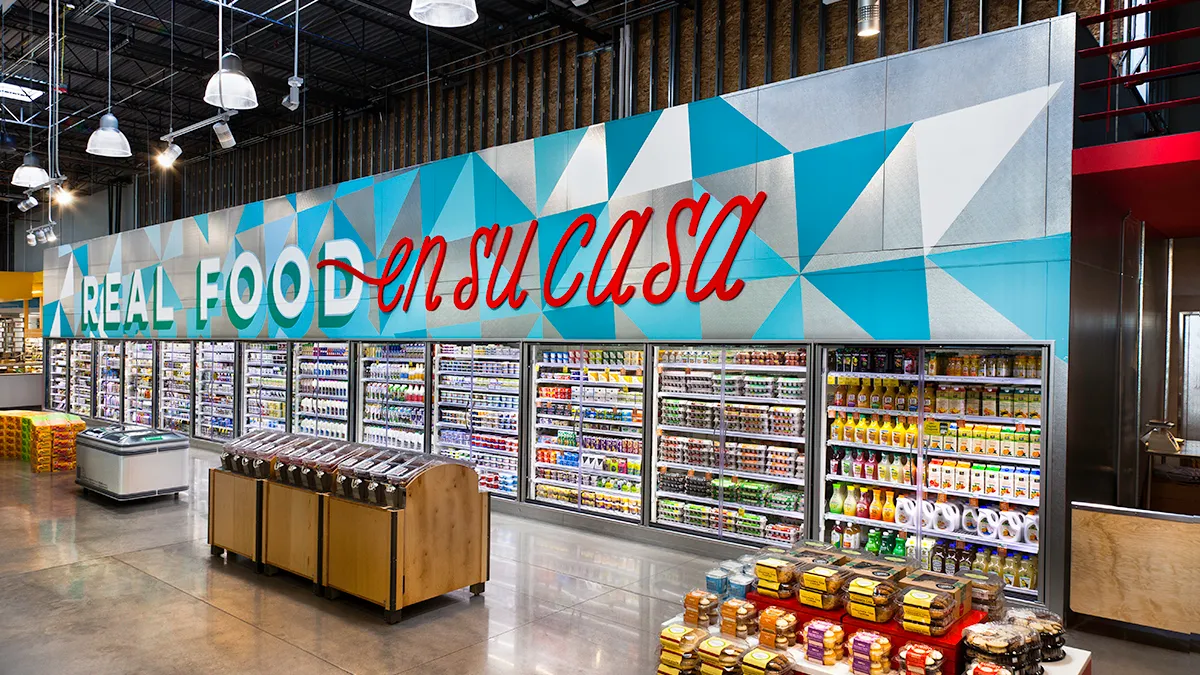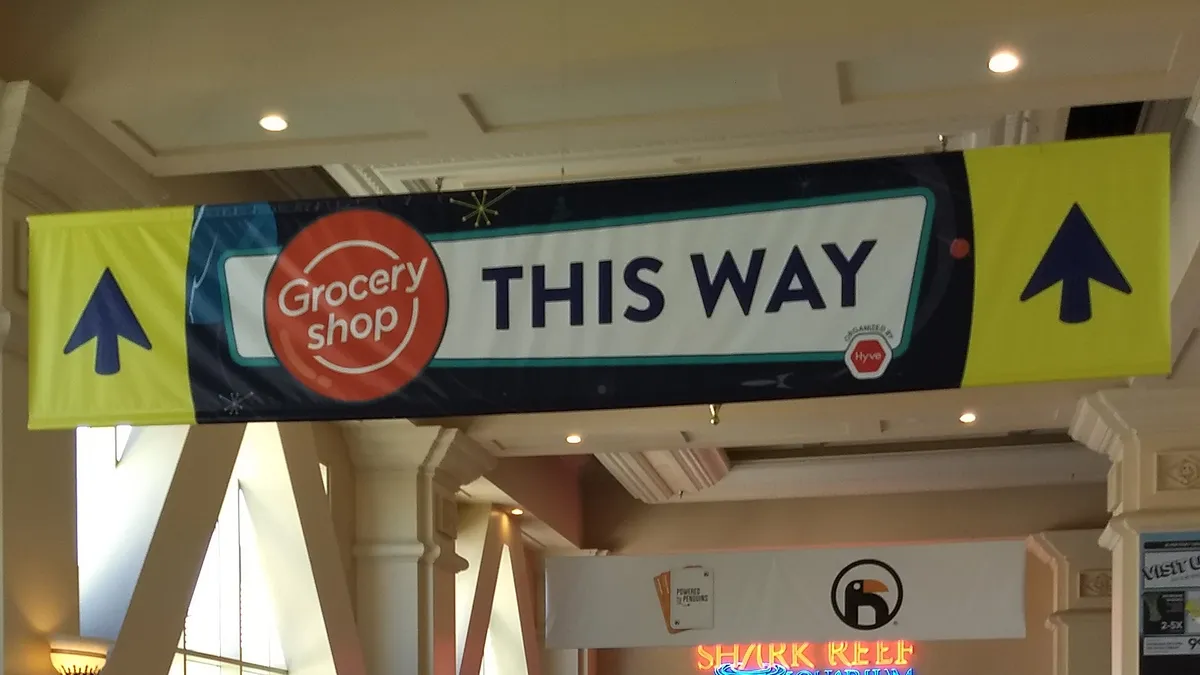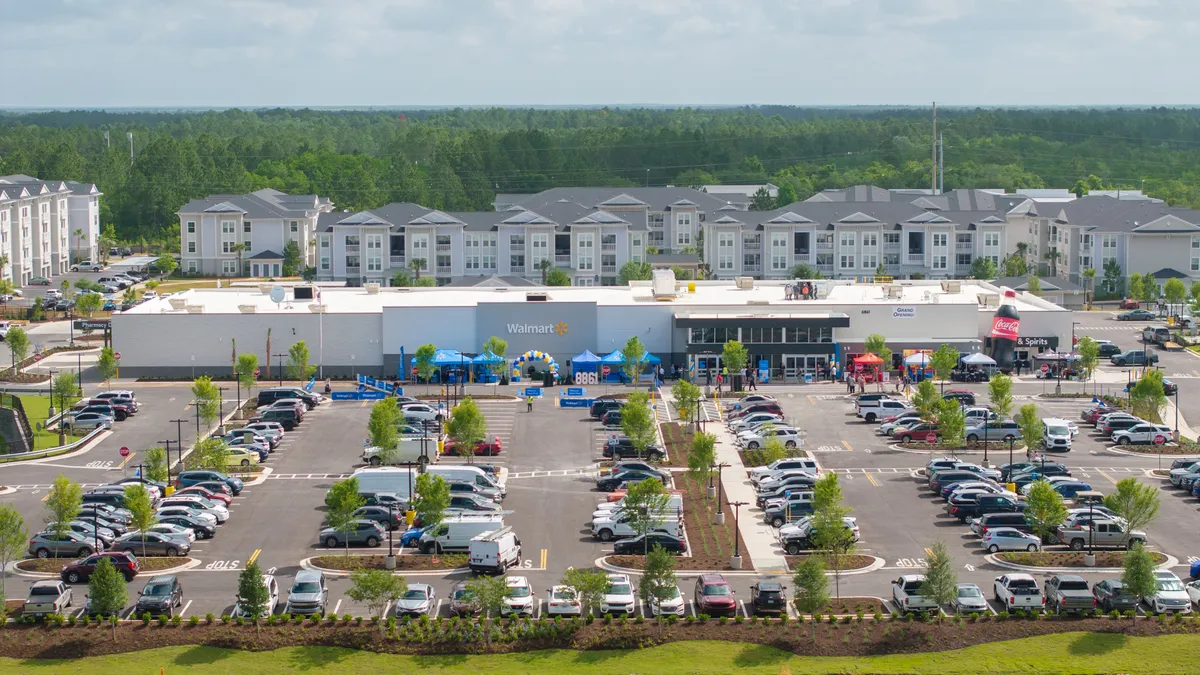Dive Brief:
-
A new Whole Foods market in El Paso, Texas, was designed to both reflect and participate in the bilingual and bicultural nature of this gateway city that links the U.S. and Mexico via a heavily-traveled bridge, Progressive Grocer reports.
-
“Spanglish” signage and other culture-bridging elements play strongly to the fact that one is as likely to hear Spanish than English spoken here.
-
The store's creator, DL English Design, intended it to be a “third place” (after the home and schools) for both English speakers and the 72% of the El Paso County population whose first-choice language at home is Spanish.
Dive Insight:
Like in many other communities with sizable immigrant populations, El Paso's Latino residents have long been used to food-shopping in stores much like the relatively small, narrow-aisled ones of their ancestral (or actual) homelands. And for the most part, American food retailers have been content to let them do so. Sourcing “traditional” favorites, finding bilingual staff, and dealing with bilingual signage have traditionally been viewed as less-than-sensible investments.
Some 30 or so years ago, a few adventurous supermarket chains began experimenting with outreaches to their neighbors on the far side of the Spanish-language barrier. Von's opened a hand full of stores under the Tianguis “open air market” banner in Southern California. Lucky Stores, Ralph's, Food 4 Less and Safeway also experimented there in the 1980s, trying to appeal more to the growing Spanish-speaking market. But a spate of supermarket industry takeovers and acquisitions in that decade and into the '90's so disrupted the marketplace that the appeal-to-Hispanics effort got more or less lost in the shuffle.
Part of the reason the Vons Tiangus concept didn't work, as then-company Chairman Roger Stangeland told the LA Times in 1987, was “It's a market . . . we really haven't served well.” And that pretty well sums up why bi-lingual, bi-cultural markets exist in very small number across the U.S. The investment in time, money and effort too often is viewed as not being worth the risk. As Whole Foods picks up where other chains left off almost 30 years ago, it's left to be seen if shoppers, demographics and stores themselves have shifted enough to make it work.










